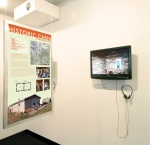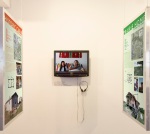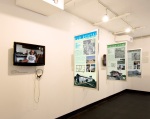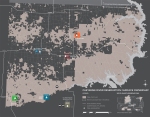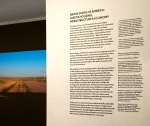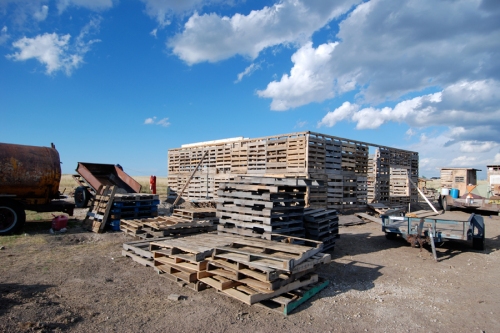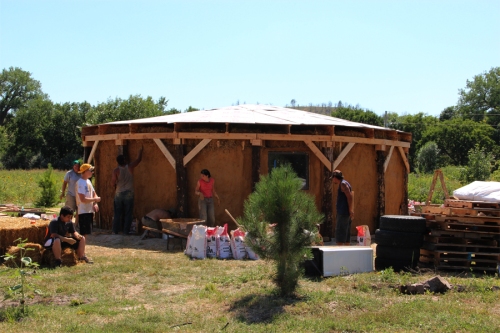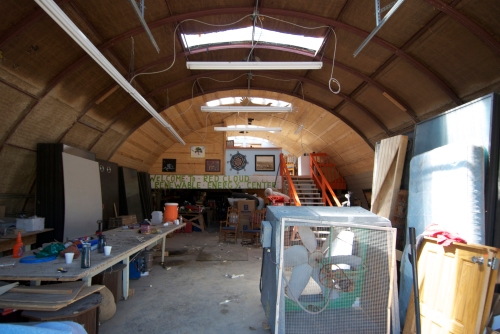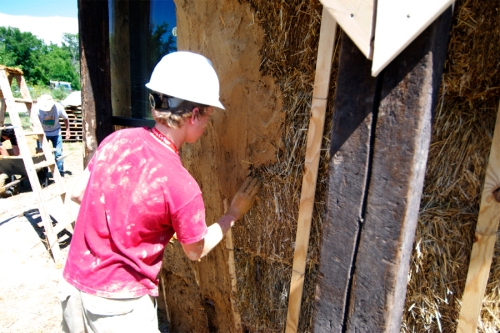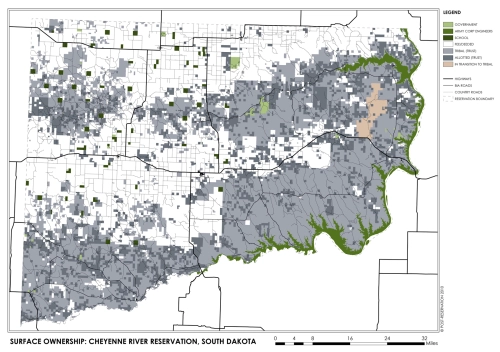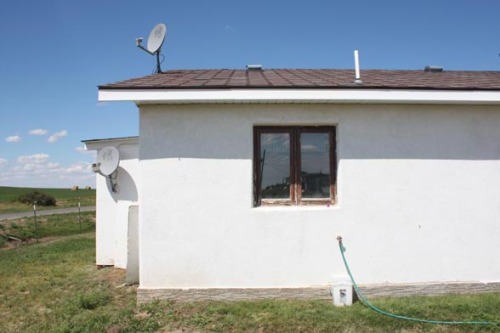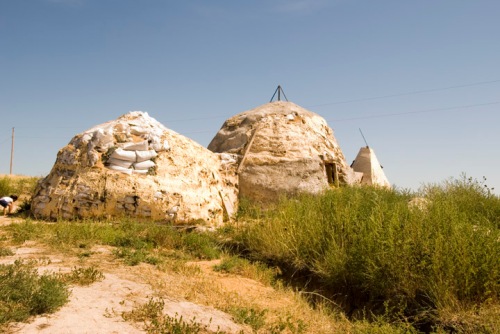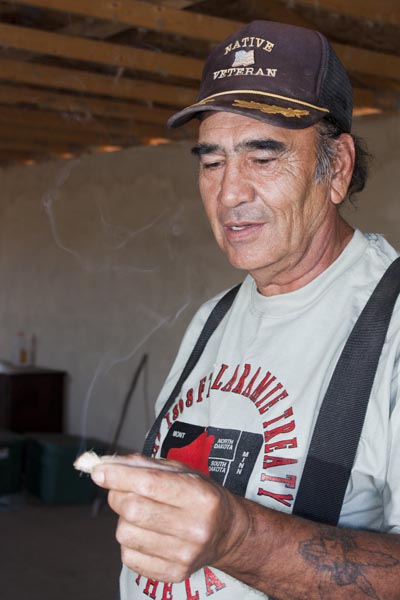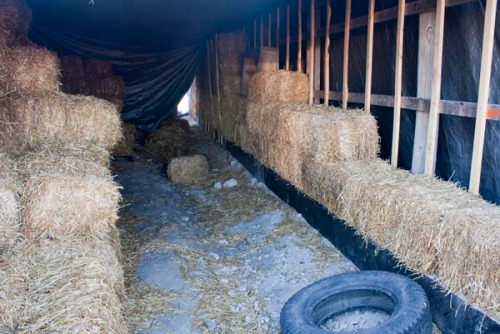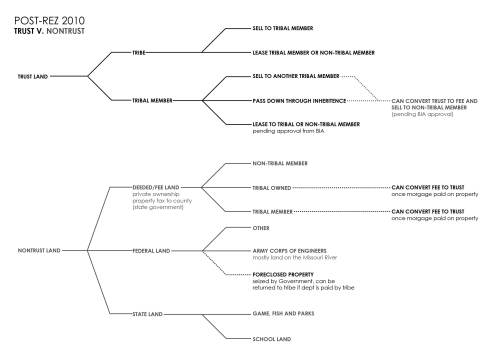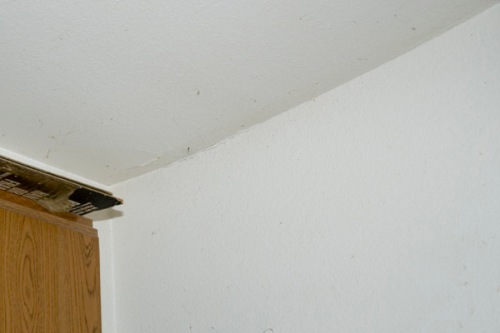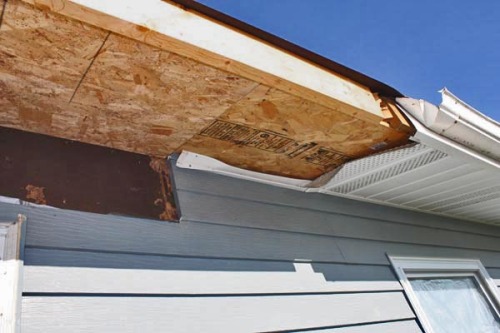-
Recent Posts
- a Tribe or not a Tribe?
- Sovereign Structures and ‘Indigenous’ Land
- Exhibition Photos – Native States of America: Lakota Housing, Infrastructure & Economy
- Exhibition Opening 02.23.12
- Pine Ridge Builds
- Back on the rez
- Surface Ownership: Cheyenne River Reservation 2010
- Log Cabin, On The Tree
- WANTED: water
- From Hemp to Hulls – alternative constructions
-
Join 16 other subscribers
Categories
Top Clicks
- None
May 2024 M T W T F S S 1 2 3 4 5 6 7 8 9 10 11 12 13 14 15 16 17 18 19 20 21 22 23 24 25 26 27 28 29 30 31 Copyright
© Annie Coombs & Zoe Malliaros, Post-Reservation, 2010. Unauthorized use and/or duplication of this material without express and written permission from this blog’s author and/or owner is strictly prohibited. Excerpts and links may be used, provided that full and clear credit is given to Annie Coombs & Zoe Malliaros, Post-Reservation with appropriate and specific direction to the original content.
Category Archives: Economy
Exhibition Photos – Native States of America: Lakota Housing, Infrastructure & Economy
Posted in Cheyenne River, Economy, Housing, Infrastructure, Log Cabin, Pine Ridge
Pine Ridge Builds
With each visit to Pine Ridge Reservation, we come across examples of innovative, sustainable building projects. In mid-August, we returned to visit Bryan Deans, who runs OLCERI (Oglala Lakota Cultural & Economic Revitalization Initiative) from his ranch in Slim Butte, on the southern side of the reservation. On the way, we stopped by a building project outside of Pine Ridge (the town). The team, led by Texas Natural Builders and Earth Tipi, is building a “pallet house,” which incorporates many of the materials and techniques we have seen in cob and straw bale buildings, but uses reclaimed shipping pallets as the material for the wall structure. The head of the building team, Dave, explained that this saves on the cost of raw materials, as the pallets are usually discarded and can be easily collected for little or no cost.
A gravel-filled drainage pit surrounds the home, and the walls are built upon several layers of earth filled bags, hammered flat. Once they create a frame, the walls will be filled with a light straw/clay infill and covered with 2” of cob and a layer of plaster finish, which Dave said should insulate to R20. The pitched roof will be insulated with cellulose (R30), and finished with pine shake shingles. Large windows look out from the front and back of the house, facing North and South, and deep overhangs will be built to shade the house and protect the walls from rain.
The kitchen and bath will receive water from the tribal water lines, and the bathroom will have a composting toilet. A solar panel will power basic electrical needs, and the owners have a 2000 watt generator as backup. For heat, the home will have a rocket mass heater built into the living room. A propane stove will be used for cooking, and an on demand propane heater will heat a small storage tank of water.The floor plan offers one kitchen / living space, 2 bedrooms, a bathroom and a 7’ loft space which is accessed by a staircase from the main living room. The home is being built for the Goings family, who were building a home for themselves until it was destroyed during last year’s rough winter. Seven people will share the space, four adults and three children.We asked the builders for a sense of cost, manpower and timing to build the structure and were told that the total cost would be around $10,000 and that a core group of 8 people could put it together in 6-8 weeks total. In conversations since, we learned that the total cost will probably be closer to $15,000 – still a far cry from $90,000which builds a “traditional” house for the Housing Authority.
The next day, we visited Henry Red Cloud’s land, between the towns of Pine Ridge and Oglala, where a team of volunteers were building a straw bale roundhouse. On the land, Henry Red Cloud has built a workshop for building and training in solar technologies – Lakota Solar Enterprises. The workshop houses volunteers and materials. Henry partners with the organization Trees, Water, People (based out of Colorado) and there were also many volunteers from RE-MEMBER. In addition to volunteers who live off reservation, we met a number of tribal members from other reservations. One woman was from Cheyenne River Reservation and is interested in building a home on her land next summer, while also inviting her friends and neighbors to take part and learn. Another man had traveled from Fort Hall reservation in Idaho (Shoshone tribe) and was planning to teach what he learned about solar heating and natural building when he went back.
This building was smaller than the pallet house, but was planned to be completed in two weeks. It was round, and it was planned to be divided into about three rooms – a main living space and two bedrooms. At the time of our visit, they had been working on it for three days and accomplished a lot. The structure was up, as well as the roof, and they were at the point when plaster is mixed (water, straw, sand and clay) and thrown against the straw bale walls.
Posted in Economy, Housing, Infrastructure, Photos, Pine Ridge
Surface Ownership: Cheyenne River Reservation 2010
The map below shows the “checkboard” condition of land ownership discussed in the previous post Whose Land? Land status and regulation.
“This “checkerboard” comes from a history of experimental and misguided land policies by the federal government. The General Allotment Act in 1887 designated 160 acre plots of land in trust to individual tribal members in the spirit of assimilation and “civilization” through farming. This land, if maintained, would automatically be turned to non-trust land after 25 years, slowly turning reservation trust land into non-trust land subject to property tax. This policy of “forced deeds” led to foreclosures and the sale of much of the original property on the reservations to non-Indians. Additionally, after the distribution of the 160 acre allotments, the “excess” or “surplus” land was sold off by the federal government to non-Indians – further reducing the size of tribal land. By 1919, 1,052,320 acres of the 2.8 million within the boundaries of reservation were “allotted” on Cheyenne River – a number that shrank to 503,483 acres by 2000.[1] In 2010, that number is 447,094. In 1934, Congress passed the Indian Reorganization Act, which prohibited “forced” deeds. Since then, one must request to convert their property to deeded land; otherwise it remains in trust.”
*Note: The map data shown was provided by the Bureau of Indian Affairs in 2010 and is subject to change.
Posted in Cheyenne River, Economy, Infrastructure
From Hemp to Hulls – alternative constructions
In the last few days we have seen some really exciting experimental housing and met with inspiring people with new and different visions for housing on both the Pine Ridge and Cheyenne River Reservations. We have now seen examples of homes built out of rammed earth, straw bales, hemp, and rice hulls (in the shape of a dome). The impetus behind the construction was different in each case.
The first experimental project we saw was a rammed earth house built by Habitat for Humanity in 1994, when Ex-president Jimmy Carter brought volunteers to Eagle Butte to build much needed housing. Of the 30 homes built, it is the only non-traditional design, and not much is known about it. We asked the builder currently running Habitat for Humanity on the reservation, and while he did know that the house was “different,” he did not know it was made out of rammed earth. We introduced ourselves to the owner, and learned that it was constructed from rammed earth. The house was notably cooler than the typical reservation housing we’ve been in. Due to thermal mass created by the thickness of the walls, the hot sun has a harder time penetrating the structure. The resident agreed that the house also felt sturdier than most he had been in. He felt the overall construction technique was good but still had a few complaints. The windows and doors were not sealed well, the layout was cramped, and because of the permanent and structural nature of the rammed earth walls, he couldn’t modify the unit. The house has four bedrooms, one bathroom, and a long kitchen/dining/living room area. He and his wife live there with their five children. He did not participate in the initial construction or design, but moved in when it was partially finished. He believes the earth had to be shipped in from elsewhere. He and his wife did much of the finishing work on the interior, and he said that he enjoyed the freedom and control of doing work around the house himself.
We saw a dome home made from bags filled with rice hulls and earth mixture on the Pine Ridge Reservation, south of Sharp’s Corner. The dome home is being built on the American Horse family’s property with the help of an organization called Nature’s Compassion. The home was partially constructed last summer, and the family is expecting volunteers to come back in the next few weeks to finish the project. The dome has an internal structure made out of burlap bags packed with soil, and an exterior insulating shell of bags packed with rice hulls. Windows and doors are framed out with 2×4’s within the domes. The house is designed as two dome shaped rooms bridged together and an adjoining wooden tipi. Even unfinished, the structure was very cool inside. The main room has a hook up for a wood-burning stove (which was recently stolen by vandals), a hook up for hot and cold water and a lofted space for sleeping. The bathroom is spacious and may get divided up due to its size. We’re not sure how many people this dome home can accommodate, but look forward to seeing its progress in the coming weeks.
The man behind this community center, built and insulated with hemp, is Alex White Plume, an energetic activist with a vibrant spirit. Alex and his family run an organization called Bring Back the Way (Owe Aku), whose mission is:
“to preserve and revitalize the Lakota Way of Life in working with the Tiwahe (family), Tiospaye (Relatives Living Together: Extended Family), Oglala Band, Lakota Nation, and Oceti Sakowin (Seven Council Fires). We promote and work to protect our Treaty Rights and Human Rights, here on the ground in our hometown and in other arenas where our rights can be protected. Owe Aku focuses on the young generations in order to contribute to the Lakota Nation, and the World, Lakota and other Indigenous People who are firmly grounded in their ancient identity and a healthy lifestyle that includes leadership skills.”In order to revitalize and maintain the Lakota way of life, he is committed to a self-sufficient lifestyle, independent from the US Government. One of the ways he has tried to create a healthy cultural economy on the reservation is by growing hemp on his family’s sovereign land. He wanted to grow something could be built with, would thrive in the harsh climate, and could withstand the wrath of grasshoppers. Hemp was a seemingly perfect solution, with its high insulating properties in both refined and unrefined states. He was growing an acre’s worth of hemp that he intended to refine, sell and build with when he was visited by the DEA, who ordered him to destroy the crop and shut down operations. The details of how this is possible are confusing, as the tribe had passed a law legalizing hemp on Pine Ridge. While the legal battle is still playing out, Alex continues to live on his family land and remains committed to building with hemp, legally imported from around the world. He sources refined hemp insulation from Germany, hempcrete and hemp hulls from England, and hempboard from Canada. With these materials, he has been building a community center, which is beautifully constructed. Currently, it is one large space with a window, but will be divided up into bathrooms, a cooking area and a gathering space. The project is still under construction, waiting for more funding.
The construction process is fairly simple, combining traditional and new building techniques. The building is framed with hand-cut 2×12’s from his property, then surrounded with formwork made from 4’ x 8’ sheets of plywood. This formwork is packed with dried hemp hulls mixed with water, tightly filling the thick frame. When this is dry, the formwork is removed and chicken wire is applied to the packed wall, then layered with medium grade hempcrete. Finally, finish layers of fine grade hempcrete create a smooth wall with high insulating and structural qualities (it withstood a test blast from a large shotgun), and no chemical additives. Hempboard flooring completes the building.
We were struck by Mr. White Plume’s desire to live in an independently sustainable way – both environmentally and financially. He did not want to receive any aid from the US government, and he did not want bring products mass produced with chemicals, from building materials to meat, into his home. This desire for independence would seem to be a positive thing to the US Government, which we have learned spends a lot of money to sustain the lives of many on the reservations we have looked at. Yet, they prevent Alex from growing a crop that would further help him and others become more self-sufficient. Very few crops grow out here, but hemp appears to thrive. It contains no drug qualities, and would be a major source of income, material, and empowerment for people on these reservations if it were legalized.
Finally, the last alternative construction technique we saw was on Bryan Dean’s ranch near Slim Butte, Pine Ridge. We did not get to meet Bryan, as he was at a community meeting, but we did meet with the generous people who were currently staying on his ranch studying permaculture and constructing a straw bale structure. The ranch was like a sustainable living lab. They have made a bio-diesel conversion device, wind turbines, a solar powered outdoor shower, and are currently working on a rainwater collection system and a large straw bale structure. The group emphasizes simple techniques that are inexpensive, and straw bale construction seems to be a great use of local materials and communal labor. The foundation for the house is a pit filled with gravel, then a base is built up using 2” x 20” sealed wood planks and filled with more gravel. Bales of straw that are roughly 18” x 20” x 36” are stacked on top of this base, then held in place by thin wood slats on either side. Once the walls are complete and smoothed out, the exterior will be plastered with clay made from the Slim Butte area mixed with lime. We saw an early example of plastering, but were told that it will be smoother upon completion. The ranch has an open house every Saturday for anyone in the area who wants to check it out. We highly recommend it!
Seeing these four housing types gave us a tremendous amount of hope for the future of housing on the reservation. The four types of structures were relatively inexpensive and easy to construct, focused on utilizing local materials, and were built with the local climate in mind. With motivation, a small initial investment and few people to help out, living situations can be created that are far sturdier, better insulated and better tailored to local needs than a trailer or HUD-style home.
Posted in Cheyenne River, Economy, Housing, Photos, Pine Ridge
housing and its discontents…
We recently met with the Cheyenne River Housing Authority, the tribal office responsible for managing federal housing programs on the reservation. It was founded on this reservation in 1963, and is funded by the U.S. Department for Housing and Urban Development (HUD), which is often the scapegoat for the poor design and conditions of housing here. Until the 1980’s, the Housing Authority had little control over its designs, and the mandated HUD designs were of poor quality. While the Housing Authority has historically been the main provider of new housing on the reservation, there are other housing organizations that have built similar designs with similar construction materials and techniques. In general, these homes were not designed to withstand the harsh climate extremes. While it would be easy to blame the Housing Authority, HUD, and the other providers for substandard housing or maintenance, we have also seen that the politics of subsidized housing are not that simple.
Housing on the reservation often looks very similar, and while the Housing Authority has built the majority of the housing here, much of it has since been purchased outright and is thus no longer their maintenance responsibility. However, the general state of housing, characterized by vinyl or wood siding, broken windows (often single pane), shingled or metal roof (preferable), and single-story timber frame design, is makeshift and in varied states of deterioration. The biggest problem we’ve heard from people regarding their housing is that the windows and doors are not tightly sealed and that they are expensive and/or impossible to heat and cool. Houses tend to be drafty in the bitterly cold winters and hot in the summers (it was recently 109 degrees). While double-pane windows are required by building code on the east coast, where winters don’t get nearly as cold as they do in South Dakota, here we’ve see many houses with single-pane windows showing few upgrades/replacements. The Housing Authority assured us that they currently follow the International Building Code, however there is no Department of Buildings here. Any inspection of a property would be by internal inspectors. Other builders have told us that there is no enforced code.
Some of the damage and poor condition of houses can be attributed to the maintenance (or lack thereof) by the various housing agencies, but some is also due to mistreatment and neglect by tenants. Without a stake in one’s house, there is less incentive to upkeep or improve one’s space, especially when money is tight and homes are overcrowded. Furthermore, a large percentage of subsidized housing can create an economic culture of poverty, where there is no incentive to invest in one’s home and there are more incentives to be unemployed than employed. Here, Housing Authority rental housing is income based, so if you don’t work, you pay less or nothing at all. If you do work, your government commodities (similar to rations and/or food stamps) can be taken away and rent will increase with your salary (until hitting a certain cap). While many people do take pride in being independent, others choose to accept the handouts. For those who do work, rent remains a percentage of their income, so there is little incentive to earn more.
There is practically no private rental market on this reservation, so one must work with the Housing Authority or one of the other non-profits operating on the reservation to find a rental unit. This process is extremely slow, and the housing stock is relatively stagnant. The Housing Authority currently manages approximately 600 rental units on the reservation, while the waiting list for housing has over 400 people on it. The first person on the list for a one-bedroom house submitted their application in 1998. We imagine they may need more than a one bedroom, 12 years later.
The person we spoke with regarding the Housing Authority’s “modernization program” informed us that the oldest HUD designed houses from the 1960’s can have exterior walls constructed out of 2 x 4’s. This doesn’t leave much room for insulation. The “modernization” department is responsible for construction updates due to damages and normal wear and tear, but renovations can also be needed in the case of “tenant abuse.” This is when the tenant so badly abuses the property that it requires renovation. The way “modernization” works is that the Housing Authority periodically inspects their units and reports the “worst of the worst” conditions. Those properties get put on a list for modernization, but a tenant cannot request their home to be modernized. We’re hoping to see examples of houses before and after this modernization process next week, but were told that repairs can range from kitchen/bathroom updates to full interior renovations.
With regard to ownership, we met with a woman at the Housing Authority who is responsible for home ownership educational programs and funding. She spoke with us about their relationship to the reservation, the housing types they provide, the setbacks because of water shortage, and the Housing Authority’s vision for the future of housing on the reservation. She told us about several mortgage packages, educational programs and advisement that provide options and support for tribal members who are interested in purchasing a home. However, it is currently difficult to build new housing because of a water shortage, so they can only advise people on purchasing already built homes or trailers. In the past, the Housing Authority did have a rent-to-own program, but this is no longer available.
We were really excited to meet with the Housing Authority and hear their side of the story. It appears that the biggest setback to creating new housing at the moment is the water shortage. In essence, the existing water pipes and reservoir for the reservation cannot accommodate the demand, and Tri-County Water, the sole provider for the reservation, has put a hold on new installations and water meters. A new water reservoir has been created but the funding hasn’t come in to lay new pipes and finish the pumping station. This could take a couple of years to be completed. Until then, there will be no new traditional water lines and thus, no new housing unless you pay for an alternative to the county water system. At the moment, the Housing Authority does not plan to explore alternatives like digging wells or developing rainwater collection systems, as this is too costly for on their budget. Thus, they will not build until the water shortage is solved.
There have been roads and infrastructure laid for a new housing development near the main town of Eagle Butte, called Badger Park, which is currently on hold due to the water shortage. The plans for this community do include a number of new ideas and experiments, including alternative building techniques and updated designs by an architecture firm in Pierre. These houses would be built in modular pieces by the Housing Authority on a lot in Eagle Butte, and then moved to their sites to be assembled and hooked up. We are planning to meet with this firm and other Housing Authority officials to discuss the details of these designs.
We also learned of an exciting project in the residential community of Cherry Creek which fell under the Housing Authority’s modernization program for rental units. Six houses have to be moved to a new location in town because they are in a flood plain. The Housing Authority received government funding and will experiment using geothermal heating in these homes. This could drastically reduce the cost of heating in the winter and provide an example for implementation of energy-conscious building techniques.
While we felt like our initial meeting at the Housing Authority provided a lot of new information about their scope of management and the housing stock, we still have more questions about specific building techniques and historic data. We want access to the GIS maps that show land ownership, roads, utilities, geology and housing location/vintage, but are having trouble getting this information. We hope this will not be necessary, but an attorney for the Department of the Interior in Washington DC has advised us that we may have to file a Freedom of Information Act request if we keep getting blocked from accessing information that is public. We have now met with the BIA, Housing Authority, and Games, Fish and Parks, all of whom have been incredibly generous with their time and discussions of their work, but reluctant to share what we feel is important spatial information. Each organization has pointed us towards another to get this information, when they all have it in one form or another.
Posted in Cheyenne River, Economy, Housing, Infrastructure, Photos
Whose land? Land status and regulation
Laws regarding land use, ownership and taxation influence everything that is built on reservation land. There are several categories and subcategories of land, each with their own laws regarding taxation, land value, control, and economic potential. The main categories of land status are “Trust” and “non-Trust” (also called Deeded or Fee). The concept of “trust” goes back to the creation of reservations by the Federal Government, as an attempt to protect tribes and their new, enclosed land. However, the trust relationship has played out in a way that has led to a checkerboard pattern of land control by the tribe, and complications in the economics of home ownership by individual tribal members.
History:
This “checkerboard” comes from a history of experimental and misguided land policies by the federal government. The General Allotment Act in 1887 designated 160 acre plots of land in trust to individual tribal members in the spirit of assimilation and “civilization” through farming. This land, if maintained, would automatically be turned to non-trust land after 25 years, slowly turning reservation trust land into non-trust land subject to property tax. This policy of “forced deeds” led to foreclosures and the sale of much of the original property on the reservations to non-Indians. Additionally, after the distribution of the 160 acre allotments, the “excess” or “surplus” land was sold off by the federal government to non-Indians – further reducing the size of tribal land. By 1919, 1,052,320 acres of the 2.8 million within the boundaries of reservation were “allotted” on Cheyenne River – a number that shrank to 503,483 acres by 2000.[1] In 2010, that number is 447,094. In 1934, Congress passed the Indian Reorganization Act, which prohibited “forced” deeds. Since then, one must request to convert their property to deeded land; otherwise it remains in trust.
Trust (allotted to tribal member or owned by tribe):
Only the tribe (as a political body) and individual tribal members can own trust land. This land cannot be sold or transferred to a non-Indian. The benefits of trust land are that no property taxes are paid on it, and it can be passed down within the family. Land passed down through family can only go to tribal members. In the case that it is not passed on, it will be returned to the tribe. Trust land can be traded for other tracts, or can be sold within the tribe. Ownership can be beneficial, title or both – affecting whether income is received from leasing of the land, and how the land is transferred after death. Some tracts of land are 1 to 1 individual ownership, but most land is considered to be “undivided interest land,” meaning that it is in trust to several family members. In this case, an individual owns a percentage of the land, but not a segment. Since the land is in trust by the federal government to the tribe, the land cannot be sold to non-Indians, and the BIA has the power to approve or reject transactions.
Nontrust (also known as Fee or Deeded):
The reservation borders include a sizable amount of land that is not in trust, and has very different regulations that govern it. This land, called “fee” or “deeded” land, is owned in full by anyone, Indian or non-Indian, and is subject to property tax. It can be sold or leased at will. It was only recently that the tribe gained 51% control of the land within the reservation, after the purchase of 24,000 acres of deeded land. It is still considered deeded until the debt is paid off, and then can be converted to trust land. Before this transaction, the tribe didn’t hold the majority interest on its own reservation.
Indian Country:
Indian Country is trust and nontrust land that is within the boundaries of the reservation and any territory outside the reservation that is under the jurisdiction of the tribe. Private property on fee land in Indian Country is subject to US and county taxes. However, these properties are under mixed jurisdiction between the tribe and federal government. For example, if a non-major crime is committed between Indians in Indian Country, the tribe has jurisdiction. However, if an Indian commits a crime against a non-Indian or vice versa, it is considered a federal crime, and the FBI has jurisdiction – not the state. All major crimes on the reservation, such as murder and rape, are under FBI jurisdiction.
Conversion Programs:
Individuals who own trust land can apply to have their land converted to fee-simple land, a practice that is usually only done if a tribal member wants to sell their land to a non-Indian, as it subjects the land to taxation. In this case, the land ceases to be considered “reservation” land and is no longer in trust for the tribe. Another process is the fee-to-trust program, in which a tribal member can apply to have their fee land converted to trust land. This process can only be started if all buildings on the property are paid in full.
City/Town Incorporations:
Four towns within the reservation, Dupree, Eagle Butte, Isabel and Timber Lake, have large sections that are incorporated by the state. Being incorporated by the state means that the land is deeded and is most likely not owned by the tribe. For example, in Eagle Butte the two main gas stations are in the incorporated section of town; the tribe does not own them. In fact, there are two Eagle Buttes – Cheyenne Eagle Butte on trust land and Downtown Eagle Butte on fee land. On tribal land there is no zoning. To create a commercial site, each individual business venture must go through an approval process by the Tribal Council and BIA, a process that we have been told is tedious and long. This is particularly problematic for the 15 residential cluster communities like Bridger, Cherry Creek, Iron Lightning and White Horse that are on reservation trust lands but have no precedent or encouragement for commercial activity.
Surface/Minerals:
After studying a map in the realty office of the BIA, we noticed that it was labeled “surface map,” and learned that surface and mineral rights are independently controlled and can have different trust statuses. For example, in the case that surface land was allotted to an individual and in trust, the minerals below could be fee land owned by another individual. Legally, mineral rights trump surface rights, so if the owner of the mineral rights wants to access their minerals, they can penetrate the surface land. Because of this, the tribe’s current policy is to always keep mineral rights in trust when selling any fee land.
Housing Process:
Tribal members can apply for home sites on tribal trust land, which would then be leased indefinitely or traded for individual ownership. Site selection involves the study of a GIS map showing which land tracts are available. Typically, an application is for a five-acre home site. The leases are usually for 25 years, and are generally renewable for another 25 years. After tribal approval, the individual will be responsible for developing the property within 2 years, and will be responsible for acquiring housing on the site, and applying for utilities from the independent companies that sell electricity, propane and water. Tri-County Water charges between $600 and $1000 to install a water meter, though some programs (eg. Indian Health Services) may assist with the costs. However, there have been no new home sites selected in the past three years, due to a current hold on new water meters by Tri-County Water. Pipes laid in the 1970s were too small for current demand, and due to maxed out pipes and pumping station, new water meters will not be installed until a new intake, pump and treatment plant is completed in Armstrong County. This could be several years, depending on funding and climate conditions. Until then, only sites with previously installed systems are selected (and these are rare), unless a cistern system is used to laboriously haul and hold water, or a more robust system of rainwater collection is put into place.
Range Units:
Much of the undeveloped land within the reservation boundaries is leased to ranchers though a system of Range Units (RU’s). Individual tribal members can apply to the tribe for 5 year leases of range units, and do not pay taxes on the land. Lease money is paid to the tribe, and the amount is calculated according to the number of animal “units” that can be run. In order to lease a RU, an individual must run at least half of his or her own animals on the property– either all together throughout the year, or half a year at a time. Generally, cattle graze the land, but horses also count for this percentage. The price of leasing land from the tribe is significantly less compared to leasing land from individuals with allotted plots of land – approximately $7/acre compared to approximately $17/acre. Still, these Range Units provide a substantial source of income to individuals who are lucky enough to have them. Range Units are difficult to come by and currently there are none available. The application process includes a non-refundable $100 fee and the selection process is not based on a list or any clear criteria, but rather appears to be a political decision made by the tribe.
[1] Indian Land Tenure Foundation, http://www.indianlandtenure.org/iltfallotment/introduction/introI.htm
Posted in Cheyenne River, Economy, Housing, Infrastructure
House visit, Dupree
Yesterday, we visited with a new friend in Dupree to see her home and survey the damage from the June 16th tornados. The house, built in the seventies by the United States Department of Housing and Urban Development (HUD), is a divided two family home. Each unit has three bedrooms, three closets, a small bathroom, a galley kitchen, dining area, and living room. Her mother moved there in 1993 with six children. Today, at any given time, 8 to 10 people live in the house. There are essentially four families in one home; our friend and her boyfriend, her mother, her brother and his two kids, and her sister’s kids. Of the adult residents, three have applications for separate housing. They do not know when or if they will be approved.
Before the tornado, the house was functional but still needed improvement. When asked what they would change about the layout, the family said they needed more closet space as there is no place for linens or general storage. Also, they would like an entry area, both for coats and to buffer the living space from the weather. A second bathroom is also needed.
Before the tornado, no renovations or improvements had been made to the property since they moved in 17 years ago. The biggest construction issue was that the windows and doors were not well sealed, so the house was drafty and cold in the winter. The front door faces west, but due to damage from the tornado they now use the side door on the north end of the house as the only entrance. Come wintertime, when the prevailing wind comes from the north, this will be very problematic. Some of the windows are missing screens and are thus inoperable, leaving bedrooms extremely hot in the summer.
The cost of living in this house was higher than we expected. We were told that their bills were approximately the following:
- Rent $380/month
- Water $200/month
- Electric $160/month
- Propane $200/month summer and $500/month winter
Essentially the cost of living during the winter is $1240/month and $940/month in the summer. The bulk of the money they spend each month is not on the house, but on utilities. This model seems backwards. Rather than investing more money into the property, money is being “thrown away” on utilities. They use more energy than should be necessary for a house that size in order to compensate for the poor insulation.
Despite the large amount of money they spend on heating in the winter, sometimes it still isn’t warm enough. When this happens, the family uses electric space heaters in the living room or spends nights in the Dupree winter shelter. This shelter was so badly damaged during the June tornados that it was demolished shortly after the storm. They can only hope a new one will be built in time for this winter, because the repairs to their house following the tornados lack insulation. This past winter temperatures ranged from -15 to 30 degrees, not accounting for wind chill.
Part of their roof was so badly damaged during the tornado that water gushed into their living room. The morning after the tornado, the portion of the roof that covers the 14’ x 15’ living room collapsed, damaging everything in the room. The Housing Authority quickly came to assess the damage and over two days installed a roof with no insulation over the living room. They were told that they were on a list to be relocated so that further renovation could happen in their home. After the next rainstorm, when leaking persisted through their light fixtures, maintenance came back and determined that the damages were fixed to the best of their capabilities – the family would not be relocated. We checked out the renovation job and agreed with the family that there was a lot that still needs to be done to make the house safe and livable. The ceiling is now sheet-rocked and spackled, but they had to cover the ceiling vent because bugs were crawling through it. The house is still not tightly sealed, and since the storm, they have been visited by spiders, grasshoppers and mice. The living room’s overhead light has damaged wiring such that they only have one option for the light – on – meaning there is an exposed live wire in the fixture. In the kitchen where the roof did not collapse, the ceiling sags and they are concerned that it may fall in during the next big rainstorm.
From the exterior of the house, the roofing is poorly attached and unfinished. The drainage gutter blew away in the storm, so now when it rains, water pours off all sides of the house. The roof overhang that protected the west side of the house from sun collapsed after the storm, leaving the living room exposed to direct sunlight. Yesterday when we visited, the high temperature was 102 degrees. The crawl space below the house, which should be available for safety during a tornado, has been leaking for years. After the storm, no one has felt comfortable going down there to check it out, fearing water, snakes, and mold. We think the lack of drainage gutters on the house will only exacerbate whatever conditions await them in the crawl space.
It is hard for us to understand how this is considered finished or acceptable by any standards. [We have since spoken with the Housing Authority and were told that insurance funding should be coming soon to pay for thorough repairs] The sad truth is, there are many families in Dupree in similar situations. On this street alone, literally every other house has visible damage to the roof from the tornado. The roofs are patched now, but none of them look like long-term sustainable solutions. We are told that there are still people living in a shelter in Eagle Butte (20 minutes away), left homeless after the storm. We have heard that the Housing Authority is understaffed and under-funded, however we think their temporary fixes will only leave properties open to greater and more expensive damage in the future. Additionally, we are concerned that living conditions may be unsafe. It would seem that an initial investment in better construction techniques and more thorough repairs would benefit both the Housing Authority and their renters.
We have many questions about the management of these properties and the responsibilities outlined in the rental agreements. We also wonder if the Housing Authority has insurance on these properties. If they do, where is the money collected from the storm damage? If they don’t, why not? We are planning to meet Housing Authority officials next week and hope to be able to answer some of these questions. The family only recently learned about the option of renters insurance, which would protect their possessions, but not the house. If they could afford it, perhaps they could have more easily replaced some of the damaged items in their living room. After realizing how much money this family is paying monthly for their housing, we wonder if a market of private rentals might allow for better and more personal service for families like this. From our understanding, the private rental market is slim to none. People leave the reservation if they want more rental options.
Finally, this young woman we visited with is truly a survivor with incredible potential. We were so impressed with her strength, intelligence and openness. We are happy to see that despite feeling frustrated by her living situation, she maintains a positive outlook. However, we hope things change for her sooner rather than later. We can tell she has unique leadership skills, passion, and discipline, despite these difficult circumstances.
Posted in Cheyenne River, Economy, Housing, Photos


